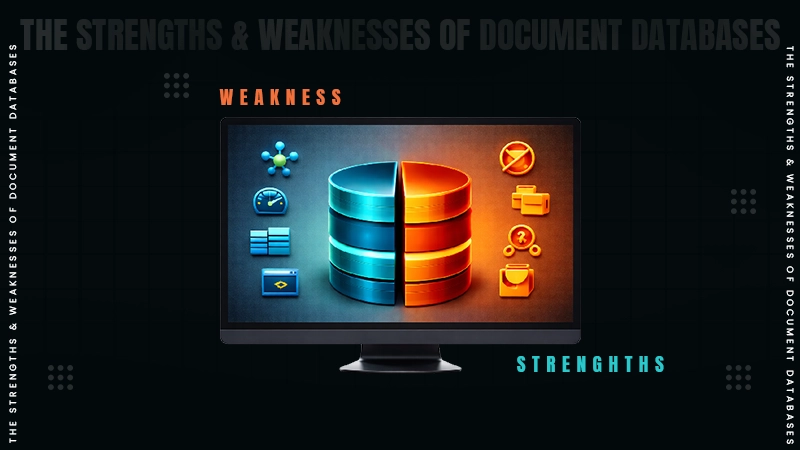Time and money is lost due to failed operations, corrupt data, and subsequent manual reruns and developer hours spent debugging errors.
Why Stability Matters: How ISP Proxies Keep Connections Consistent
- What Connection Stability Actually Means
- The Infrastructure That Makes ISP Proxies Different
- Numbers That Actually Matter
- How Redundancy Saves Your Sanity
- Why Session Persistence Is Everything
- Bandwidth That Doesn't Disappear at 7 PM
- Security Without the Drama
- The Real Cost of Instability
- What's Coming Next
- Bottom Line
- Frequently Asked Questions
When your critical data collection comes to a halt due to a lost connection from your proxy, you recognize the actual cost of a network being unstable. The traditional residential proxies that run on erratic consumer internet.
It is a situation that is totally unpredictable, will fail to connect, the latency will constantly be shifting, and the session breaks after a while, it will fail at the most critical moment.
However, ISP proxies are architecturally different. These proxies utilize commercial-grade architecture, redundant power, and static IP, and ensure the stability needed for long marathon scraping sessions.
Therefore, stability is not a feature: it’s the bedrock upon which successful operation is built. Are you curious to learn more about ISP proxies and their stability?
Read this article till the end!
KEY TAKEAWAYS
- ISP proxies use enterprise-grade and monitored infrastructure.
- Professional failover systems and geographic spread prevent outages from interrupting operations.
- Sophisticated state management preserves cookies and authentication for uninterrupted, extended tasks.
- The stability reduces developer time, retries, and manual intervention, justifying the initial cost.
What Connection Stability Actually Means
Let’s navigate through the marketing fluff. Connection stability ultimately comes to three things: consistent response times, staying online, and keeping sessions alive. Simple concepts, but surprisingly hard to deliver.
Traditional residential proxies fail here because they are usually borrowing someone’s home internet. When that person reboots their router or begins downloading movies, your connection suffers. It’s like trying to run a business via your neighbor’s WiFi (spoiler: it doesn’t work well).
The Infrastructure That Makes ISP Proxies Different
ISP proxies function on the same backbone infrastructure that Internet Service Providers utilize internally. We are redundant power systems, talking enterprise hardware, and fiber connections that don’t hiccup when someone microwaves popcorn.
The hosting environment alone shifts everything. Residential proxy hosts may unplug their device whenever, but ISP infrastructure runs in temperature-based facilities with backup generators. Network engineers actually monitor these systems round the clock, fixing issues before you even notice them.
And here’s something crucial: ISP proxies hold static IP addresses. Residential connections shuffle IPs consistently, breaking your sessions and forcing reconnections. With ISP proxies, your IP stays in, which means marathon scraping sessions don’t randomly explode halfway through.
Numbers That Actually Matter
Let me explain with some real metrics. ISP proxies deliver 99.9% uptime, while house proxies hover around 94%. That 5.9% difference? It is 43 hours of downtime yearly, or roughly one full work week.
Latency tells an even transparent story. Residential proxies swing wildly between 50ms and 500ms depending on what the host is doing. ISP proxies? A steady 30-80ms, period. When you buy ISP proxy at MarsProxies.com, you are essentially purchasing predictability, and that consistency enables automation that actually works reliably.
Session duration showcases another huge gap. ISP proxies control connections for days without breaking a sweat, whereas residential proxies typically crap out after 2-6 hours. Think about running a 12-hour data collection job that fails at hour eleven. Yeah, not fun.
How Redundancy Saves Your Sanity
Professional ISP setups involve failover systems that residential networks can’t match. Multiple upstream providers mean if one connection dies, traffic immediately reroutes through another path. You will not even know it happened.
This isn’t some basic backup internet like your phone’s hotspot. We are talking millisecond detection and automatic rerouting via geographically distributed facilities. One data center goes down? Traffic flows through another region seamlessly.
The geographic spread matters more than you would think. ISP providers maintain presence across regions, so localized outages do not torpedo your entire operation. Compare that to residential proxies where one neighborhood power outage kills the whole proxy pool.
Why Session Persistence Is Everything
Ever tried web scraping with unstable connections? It is painful. Cookies disappear, you lose authentication tokens, and websites treat you like a new visitor constantly. Some tasks literally can’t be completed without persistent sessions.
ISP proxies handle this amazingly through sophisticated state management. They preserve TCP connections, maintain authentication, and keep cookie jars intact for days. Research from Stanford’s networking lab shows proper session handling cuts connection overhead by 47% in extended operations.
Cookie persistence alone justifies the switch for many users. Websites monitor everything through cookies, and when connections drop, you lose that context. ISP proxies keep those cookies alive, preserving login states and preventing suspicious activity flags.
Bandwidth That Doesn’t Disappear at 7 PM
You know how your home internet slows during prime time? Residential proxies suffer the same fate. That blazing fast connection at noon turns out to be molasses when everyone starts streaming after dinner.
ISP proxy bandwidth comes from dedicated allocations not by consumer patterns. Quality of Service protocols ensure your traffic gets priority regardless of what’s happening on the network. According to Harvard Business Review’s tech analysis, consistent 100 Mbps beats variable gigabit speeds for business applications every time.
Traffic shaping avoids resource hogging too. No single user can monopolize the entire pipe, ensuring everyone gets reliable performance. It is managed infrastructure versus the wild west of consumer internet.
Security Without the Drama
Authentication stability might sound boring, but continuous credential rotation kills productivity. Residential proxies love changing passwords and requiring reauthentication at the worst moments.
ISP proxies keep things simple: fix your authentication once and forget about it. Whether using API tokens, IP whitelisting, or basic credentials, they stay valid indefinitely. Your automation scripts don’t break because someone decided to refresh security tokens.
Encryption stays consistent too. While residential proxies may downgrade security based on the host’s ancient router, ISP proxies maintain proper HTTPS/TLS without surprises. The Internet Engineering Task Force actually standardizes these implementations, ensuring compatibility everywhere.
The Real Cost of Instability
Of course, ISP proxies cost more upfront. But calculate the true expense of instability: failed operations, manual reruns, developer hours spent debugging phantom issues. It adds up fast.
Take a typical scraping operation processing 10,000 pages daily. With 94% residential uptime, you are losing 600 requests per day. At 99.9% ISP uptime? Maybe 10 failures. The retry logic alone justifies the price difference, not taking account of saved frustration.
Stable connections streamlines your entire stack too. Less complex error handling, simpler retry mechanisms, fewer 3 AM emergency calls. These hidden savings often dwarf the proxy costs themselves.
What’s Coming Next
The stability game keeps changing. Software-defined networking now enables real-time route optimization, picking the fastest path automatically. Machine learning anticipate failures hours ahead, moving traffic before problems occur.
5G infrastructure brings another leap forward. Carrier-grade 5G (not your phone’s version) delivers sub-10ms latency with 99.99% availability. Early adopters report performance that makes current solutions look primitive.
Bottom Line
Stability isn’t glamorous, but it’s what separates expert infrastructure from hobby-grade tools. Speed means nothing if connections drop randomly. Anonymity does not help when sessions break constantly. In practice, teams evaluating providers such as SmartProxy usually prioritise uptime consistency, session persistence and failover behaviour over headline speeds because reliability is what keeps automation alive.
ISP proxies deliver boring, predictable, utterly reliable connections using professional infrastructure and intelligent design. For anyone looking for about automated operations, that stability transforms from nice-to-have into absolutely essential.
Frequently Asked Questions
What do you mean by the “real cost” of instability?
Why are ISP proxies more stable than residential proxies?
ISP proxies run on enterprise ISP backbone infrastructure with their own redundancy and professional monitoring and uptime; they don’t run on consumer home internet and its problems.
What uptime difference do ISP proxies offer?
ISP proxies typically provide 99.9% uptime, compared to about 94% for residential proxies.
How does a static IP help stability?
Static IP’s mitigate session breaks and forced reconnections during long scraping or automation tasks.
The global data explosion is one of the defining trends of the digital age. Every day, an estimated 402.74 million…
You don’t know how much you rely on your laptop until it acts up. The cursor stops moving. The fan…
Imagine this: You are juggling ten things—one tab for work, one for shopping, and one for that article you wanted…
The majority of engineering teams work at a much slower pace than they could because of systematic friction in their…
The dramatic evolution of eCommerce in the last decade has reshaped consumer expectations regarding speed, convenience, and sustainability. As a…
Payroll mistakes can lead to fines, delayed payments, and payroll disputes. These payroll issues can create pressure for high-risk businesses…
Property management teams can benefit from data in a number of ways. Everyone understands that it’s critical to make wise…
Fantastic things don’t just happen. They occur when teams transform hazy inputs into clear and actionable decisions for everyone, replacing…
There are lots of tasks that are generally very amusing and thrilling; however, bookkeeping is definitely not one of them.…








